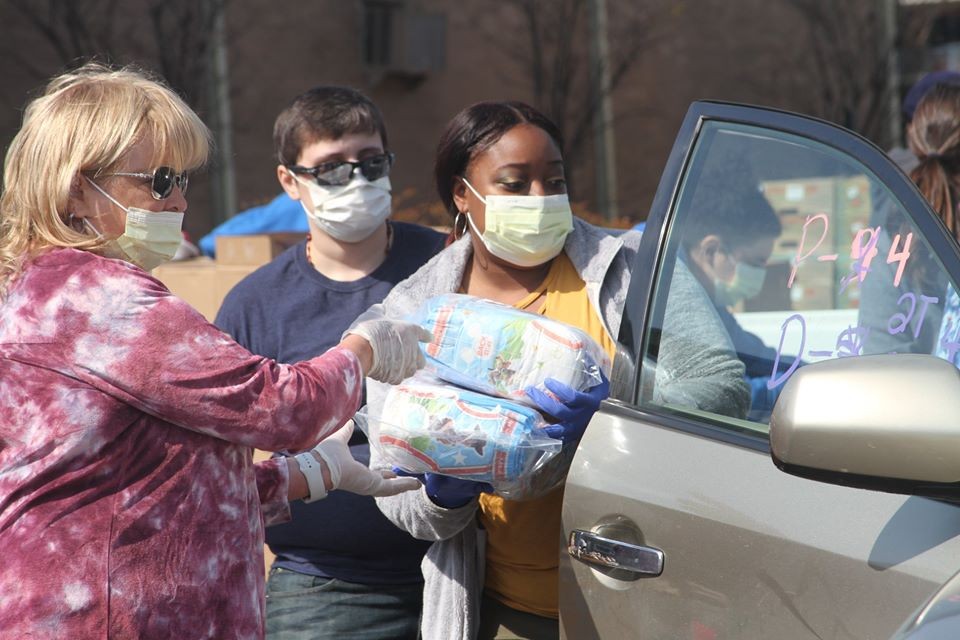 Facebook/Mid-South Food Bank
Facebook/Mid-South Food Bank
Volunteers load food into a car at a mobile food pantry
Tennessee’s virus transmission rate stayed the same from last week, according to Vanderbilt University researchers, and new data show what could happen when the state’s economy re-opens.
State and local officials have relied upon the Vanderbilt model in making decisions about how and when to allow citizens to return to work and some businesses. Last week, the model showed that Tennesseans had flattened the curve of the virus by staying home but said the situation here remained “fragile and uncertain.”
In a new policy briefing published Friday, researchers said Tennessee’s transmission rate remained at around 1.0. The number quantifies the average number of additional people infected by one infected person. If the number is above one, the virus is growing. A rate below one has to be sustained to suppress the virus.
“Today, Tennessee’s transmission number remains around 1.0 in both metro and non-metro areas,” reads the paper. “This indicates that social distancing has reduced transmission of the virus by limiting the number of contacts among Tennesseans.”
Governor Bill Lee plans to allow 89 Tennessee counties to re-open next week with restrictions. Six counties, including Shelby County, will remain under strict stay-at-home orders.

Governor Bill Lee
The new Vanderbilt paper looks around the corner to what could happen next.
“This week we focus on the question of how to maximize the amount of time the Tennessee economy is ’open’ in 2020,” reads the paper. “Another way to state that same goal is that we want to minimize the amount of time spent under restrictive social distancing protocols.
“Achieving these goals means avoiding a possible second round of business restrictions triggered by escalating hospitalizations that threaten to overburden the health care system.”
[pullquote-1] The Vanderbilt model looks at what could happen if the economy is re-opened at different transmission rates. (See chart below.) If orders are lifted and virus rates spike again, it could trigger a “circuit breaker.” Stay-at-home orders could return to save hospitals and health care systems from becoming overwhelmed.
If the transmission rate continues to slow, for example, the economy could remain open indefinitely. If the state opens on May 1 and virus rates spike above 1.5, the new model says the economy would need to close again in 46 days.

All of the models boil down to this:
“The chart shows that the longer social distancing is continued, and the more transmission of the virus is reduced, the longer the economy could stay open before overburdening the state’s hospitals and risking the health of all Tennesseans who might need care, not just those suffering from COVID-19,” reads the paper.
It’s unknown if the current virus transmission rate will change after the governor’s Safer At Home order is lifted. But the Vanderbilt researchers said ”we do know that the number of social contacts among Tennesseans will increase — even if certain aspects of physical distancing at businesses, mask-wearing and hygiene practices continue.”
“Finally, we continue to stress the success of Tennesseans in reducing the transmission of COVID-19 to its current level, though we also underscore how fragile this success can be and how a transmission number below 1.0 must be sustained for the epidemic to diminish,” reads the paper. “Strong public health measures, including widespread testing and contact tracing, are essential to maintaining this trajectory as we ease social distancing practices.”
Read the new paper here:
[pdf-1]